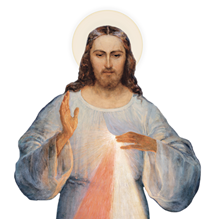
The dynamic duo: statues representing St. Teresa of Ávila and St. John of the Cross in Beas de Segura, Spain. (Wikipedia)
Saint John, Pope Benedict XVI said, taught that growth in holiness comes about only through purifying oneself through “the elimination of every disorderly dependence on things.”
By Kimberly Bruce
On Dec. 14, we remember and celebrate one half of a dynamic duo in the Church: St. John of the Cross. Saint John, along with St. Teresa of Ávila, established the Discalced Carmelite Order of nuns and friars in the mid-16th century.
Saint John was born John de Yepes on June 24, 1542, in Ubeda, Spain, the youngest of two children. The de Yepes were very poor because their father, Gonzalo, was disinherited by his noble family for marrying their mother, Catalina Alvarez, a lowly silk weaver. Gonzalo passed away when John was 9, leaving his mother struggling to provide for herself and her sons.
The family then moved to Medina del Campo, where John attended the local school for the poor. While attending school, for several years he also worked as a male nurse at a Catholic hospital. At the age of 18, St. John entered the Jesuit College at Medina del Campo, where he studied humanities, rhetoric, and classical languages. By the time his three years of study at the college had ended, John had discerned that he was called to be a priest.
John began his studies for the priesthood as a Carmelite, initially taking the name Juan de Santo Matía. Studying philosophy and humanities for another three years at the University of Salamanca, he was ordained a Catholic priest at 25 in 1567.
Joining forces
Shortly after Fr. John’s ordination, when he had returned to Medina del Campo, he met the Carmelite nun, Sr. Teresa of Jesus. Sister Teresa wasted no time in telling the young priest that she wished to reform the Carmelite Order, including its male branch, and suggested Fr. John assist her in the endeavor “for the greater glory of God.” Fascinated, Fr. John embraced Sr. Teresa’s ideas from the start and joined forces with her to make the reforms to the Order a reality.
Together these two future saints opened the first Discalced Carmelite house for nuns in 1568. “Discalced” means “barefoot,” as both wore sandals like the poor. Saint John began his reforms for friars in the same year by joining with three other male companions. As part of the primitive Rule, he and the men took new names. From that time on, St. John would forever be known as “St. John of the Cross.”
To Ávila
Saint John was asked by St. Teresa in 1572 to come to Ávila to be the confessor and vicar of the monastery where she was prioress. Five years later, on the night of Dec. 3, 1577, John was unjustly accused, seized, and taken prisoner in Toledo. He was kept for several months in a very narrow, stifling cell, where he suffered deprivations, abuses, and punishments normally reserved only for those guilty of serious crimes.
It was during this terrible ordeal as a prisoner that St. John composed some of his most famous writings, one of which was A Spiritual Canticle of the Soul and the Bridegroom Christ. His other famous works include The Living Flame of Love, The Ascent of Mount Carmel, and Dark Night of the Soul, along with many other writings, letters, and spiritual instructions. Then one night in August of 1578, John made a daring escape from his confines and sought shelter at the Monastery of Discalced Carmelite Nuns in the area.
Saint John went on to found and govern many other monasteries until 1591 when he was assigned to the new religious province of Mexico with 10 other companions. He never made it to the country, however, because he became seriously ill and died on Dec. 14, 1591, at the age of 49. He was canonized in 1726 by Pope Benedict XIII, and his writings and heroic life earned him the designation of Doctor of the Church by Pope Pius XI in 1926.
Saint John’s tomb is in Segovia, Spain, and his body is incorrupt. Many report seeing amazing images in his relics: Christ on the Cross, the Blessed Virgin Mary, and various saints.
Grow closer to God
Pope Benedict XVI, in his general audience of Feb. 16, 2011, spoke of St. John of the Cross. He said that St. John’s primary interest was to educate others on how to grow closer to God. Saint John, he said, taught that growth in holiness comes about only through purifying oneself through “the elimination of every disorderly dependence on things.”
This begins, according to St. John, “by purifying the life of the senses” and by developing the three theological virtues of faith, hope and charity.
To accomplish this purification, Benedict relays, the soul must free itself “from every attachment or affection contrary to God’s will,” “be open to divine action,” and not place obstacles against the purification of one’s soul. The three theological virtues aid this process by disposing “Christians to live in a relationship with the Holy Trinity. They have God for their origin, their motive, and their object” (Catechism of the Catholic Church, 1840).
Saint John of the Cross, teach us to grow daily in virtue so that we may carry the light of Christ within us, even amidst trials as you did, always maintaining a spirit of joy and love! Amen.
Please help the Marians in their efforts to have St. Faustina recognized as a Doctor of the Church by signing the petition.
{shopmercy-ad}

















